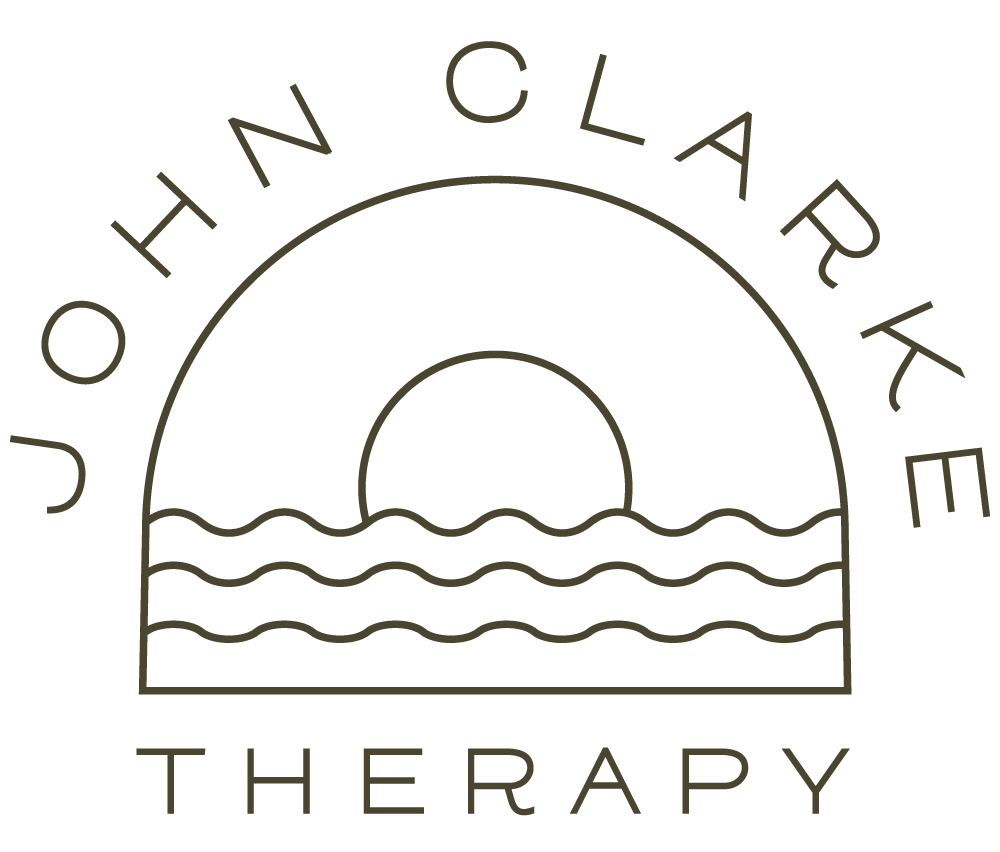– Services
Heal your brain with EMDR therapy
EMDR Therapist in San Francisco
When trauma happens, the memories get stuck in your brain on repeat…
THE RESULT? CONSTANT, PAINFUL FLASHBACKS THAT PUT YOU BACK “IN” YOUR TRAUMA.
Luckily, there’s a groundbreaking brain therapy that can help. Eye Movement Desensitization and Reprocessing, or EMDR, is a powerful treatment that helps process traumatic memories from short-term to long-term storage…
…resulting in real healing that lasts.
If you struggle with…
…painful flashbacks...
…hyper vigilance and anxiety…
…restlessness and trouble relaxing…
…impulsive behaviors like using drugs, alcohol, and working too much…
Then you may benefit from EMDR as a treatment option for your trauma and PTSD.
EMDR uses bilateral stimulation to help permanently heal your brain and turn your traumatic memories from vivid color to dull black and white.
EMDR treatment can help people recover from trauma in as little as 2-3 sessions, resulting in:
No more flashbacks
Sleeping restfully again
Decrease in impulsive behaviors
A calmer, more confident disposition
Healed relationships with loved ones
What does a typical EMDR session look like?
Initially, we’ll explore your trauma history and map out the memories that you would like to target with EMDR therapy. We’ll also work on grounding techniques, including your “safe calm place” so that we can return to calmness during and after each EMDR session.
Then, we’ll decide on a method for bilateral stimulation, which could include:
Vibrating tappers that you hold in your hand
A light bar that you follow with your eyes
Tapping your own shoulders
Auditory stimulation
Generally, bilateral stimulation in itself is a soothing, grounding intervention that helps people feel more calm and at ease.
Next, we’ll start the reprocessing where I’ll have you focus on one part of the memory at a time, rate your internal distress 0-100, and then begin the bilateral stimulation.
We’ll explore your inner network of traumatic memories, always going at a pace that you set and control, and you will see how the memories dull down each time we focus on them.
While we explore, we’ll also identify and replace any negative beliefs surrounding your trauma, such as “I’m worthless,” “I’m helpless,” “I deserved it” etc.
Over the coming weeks and months you will most likely feel a reduction in symptoms and more of an ease when thinking about or talking about your trauma.
Interested in trying EMDR treatment in San Francisco?
Reach out today for a free consultation.
Book a free consulation.
More about EMDR
What is EMDR therapy?
EMDR therapy is a revolutionary approach to psychotherapy that was developed in the late 1980s by psychologist Dr. Francine Shapiro. It was initially designed to help individuals suffering from post-traumatic stress disorder (PTSD) but has since been found effective in treating a wide range of psychological conditions and emotional distress.
Unlike traditional talk therapy, EMDR focuses on the underlying thoughts, emotions, and bodily sensations associated with traumatic memories. It recognizes that traumatic experiences can become "stuck" in the brain's memory networks, leading to ongoing distress and dysfunction. EMDR works to reprocess these memories, allowing individuals to integrate them into their overall life experiences and find resolution.
Understanding the benefits of EMDR therapy
The benefits of EMDR therapy are vast and can have a profound impact on an individual's life. One of the primary benefits is the ability to heal from traumatic events. EMDR helps individuals process and release the emotional distress associated with past traumas, allowing them to move forward and find a sense of peace and resolution.
In addition to trauma, EMDR therapy has been found effective in treating anxiety disorders, depression, phobias, and other emotional challenges. It can help individuals overcome debilitating fears, manage intense emotions, and develop healthier coping mechanisms.
Furthermore, EMDR therapy can improve overall emotional well-being and enhance personal growth. By addressing and resolving past traumas and emotional distress, individuals can experience increased self-esteem, improved relationships, and a greater sense of self-awareness and empowerment.
The science behind EMDR therapy
EMDR therapy may sound unconventional, but it is firmly grounded in scientific research and evidence-based practices. Numerous studies have demonstrated its effectiveness in treating trauma and other psychological conditions.
The underlying mechanism of EMDR therapy is still not fully understood, but there are several theories. One prominent theory suggests that the bilateral stimulation used in EMDR, such as eye movements, taps into the brain's natural information processing system. This allows for the reprocessing of traumatic memories and the integration of new, adaptive information.
Additionally, EMDR therapy has been found to activate the parasympathetic nervous system, which promotes relaxation and a sense of calm. This physiological response helps individuals feel safe and supported during the therapeutic process, enhancing the effectiveness of the therapy.
How EMDR therapy works
EMDR therapy typically involves eight phases, each serving a specific purpose in the healing process. The initial phases focus on building trust and rapport between the therapist and client, establishing a safe environment for the therapeutic work to take place.
Once the foundation is established, the therapist guides the client through the reprocessing of traumatic memories using bilateral stimulation. This can involve eye movements, hand taps, or auditory tones, depending on the client's preference and comfort level. The therapist helps the client to focus on the traumatic memory while simultaneously engaging in bilateral stimulation.
As the reprocessing takes place, the client may experience a range of emotions, sensations, and insights. The therapist provides support and guidance throughout the process, ensuring the client feels safe and understood during this potentially intense and transformative experience.
Finding an EMDR therapist in San Francisco, Oakland, and the Bay Area
If you're considering EMDR therapy in San Francisco, Oakland, or the Bay Area, it's crucial to find a qualified and experienced therapist who specializes in this technique. EMDR therapy requires specific training and certification, so it's essential to choose a therapist who has undergone proper education and supervision.
One way to find an EMDR therapist in San Francisco or Oakland is through online directories or professional organizations such as the EMDR International Association (EMDRIA). These resources provide a list of therapists in your area who are trained in EMDR and can help you find the right fit for your needs.
When selecting a therapist, it's essential to consider factors such as their experience, credentials, and approach to therapy. It's also crucial to find someone with whom you feel comfortable and can establish a trusting therapeutic relationship.
What to expect during an EMDR therapy session
EMDR therapy sessions typically last between 60 to 90 minutes, depending on the client's needs and preferences. The exact number of sessions required will vary depending on the individual and the nature of their concerns. Some individuals may experience significant relief in just a few sessions, while others may require more extensive treatment.
During an EMDR therapy session, the therapist will guide the client through the eight phases of EMDR, as mentioned earlier. This includes providing support, helping the client identify and process traumatic memories, and facilitating the integration of new, adaptive beliefs and emotions.
It's important to note that EMDR therapy can be emotionally intense, as it involves revisiting and processing traumatic memories. However, the therapist is trained to create a safe and supportive environment, ensuring that the client feels secure throughout the process.
EMDR therapy for specific conditions: PTSD, anxiety, and depression
EMDR therapy has been extensively studied and found effective in treating various psychological conditions, including post-traumatic stress disorder (PTSD), anxiety disorders, and depression.
For individuals suffering from PTSD, EMDR therapy can help reduce the intensity of traumatic memories and associated symptoms such as flashbacks, nightmares, and hypervigilance. It allows individuals to reprocess traumatic experiences, leading to a decrease in distress and an increased sense of safety and control.
In the case of anxiety disorders, EMDR therapy helps individuals identify and address the underlying causes of their anxiety. By reprocessing past experiences that contribute to their anxiety, individuals can develop healthier coping mechanisms and experience a significant reduction in anxiety symptoms.
Similarly, EMDR therapy can be highly beneficial for individuals struggling with depression. By exploring and reprocessing negative beliefs and emotions associated with past traumas or challenging life experiences, individuals can experience an alleviation of depressive symptoms and a renewed sense of hope and purpose.
Conclusion: Transforming lives through EMDR therapy in Oakland and San Francisco
EMDR therapy in Oakland and San Francisco offers a life-changing opportunity for individuals seeking to heal from past traumas, manage emotional distress, and achieve personal growth. With its unique and powerful approach, EMDR has proven effective in reshaping lives and restoring emotional well-being.
If you're ready to take the next step towards emotional healing and personal growth, consider EMDR therapy in San Francisco or Oakland. Find a qualified therapist who specializes in EMDR and embark on a transformative journey towards a brighter and more fulfilling future. It's time to reshape your life and restore your emotional well-being through the power of EMDR therapy.


